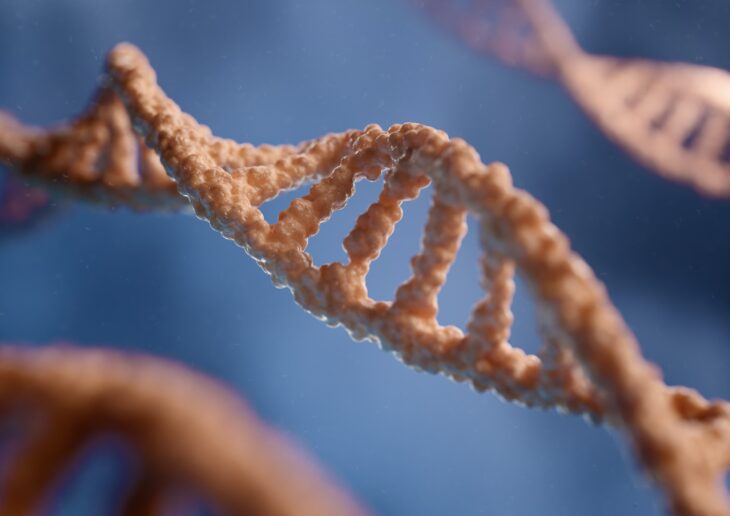When people die from cancer, it’s often because of late detection, at which stage existing treatments almost never work. If doctors can detect cancer earlier, their patients would have a better chance of survival. But existing cancer screening methods, like surgery and radiation, are invasive, painful, and risky, and researchers have found many people won’t undergo invasive screening solely for detection. Therefore, scientists are interested in developing new non-invasive ways to detect cancer.
As cancer cells grow, they shed byproducts of DNA, proteins and other biomolecules in bodily fluids, like blood. So scientists suggested a potential non-invasive way to detect cancer is by analyzing the DNA fragments found in bodily fluids, called cell-free DNA, and looking for any tumor-specific mutations. Since this method uses fluids rather than tissue samples, it’s called a liquid biopsy.
Researchers found one limitation of the liquid biopsy method is the low number of tumor-specific mutations in cell-free DNA, which makes them difficult to identify, especially at the early stage. They found other limitations like small blood sample sizes, contamination from sequencing and sample preparation, and the presence of harmless natural mutations common in white blood cells can all affect the results of a liquid biopsy.
A team of scientists from the USA wondered if identifying changes in all the genetic material, or the whole genome, of cell-free DNA could accurately detect tumor-specific mutations and the patterns with which they occur. To test this hypothesis, they developed a machine learning method to identify single mutation changes in cell-free DNA. Single mutation changes involve changes in one nucleotide base, either A, T, C, or G. They called their new method GEMINI, which stands for GEnome-wide Mutational Incidence for Non-Invasive detection of cancer.
The scientists used different categories of data to train and validate GEMINI. They collected blood samples from 588 patients with liver and lung cancer, spun the blood in a centrifuge to separate the plasma, extracted the cell-free DNA from the plasma, and sequenced it. They also collected tissue samples from the patients when possible.
Next, they used computational methods to identify the type and frequency of single mutation changes in the cell-free DNA, including those commonly associated with cancer and those commonly associated with normal body functions. They developed a machine learning algorithm to classify each single mutation as cancer or noncancer, based on their types and frequencies. They projected results from the classified mutations in each patient’s samples onto a “GEMINI scale”, where a higher score indicated a higher probability the patient had cancer.
They used data from patients with a high risk for lung cancer but no known diagnosis to evaluate GEMINI’s ability to detect type-specific DNA changes. They found it could identify single mutations that occurred frequently in both tissue and cell-free DNA samples. They tested its ability to detect early-stage lung cancer or benign tumors in another group of patients. They found it could identify mutation patterns, determine how often mutations occurred, and use this data to calculate the probability a patient had lung cancer.
Next, the scientists used GEMINI to evaluate the blood samples of patients who appeared healthy at the time of sample collection, but were diagnosed with cancer less than 5 years later. They reported all these patients’ blood samples had high GEMINI scores, which implied a high probability of having cancer. They interpreted these scores as proof GEMINI could detect abnormalities in cancer patients years before their diagnosis.
Finally, they investigated if GEMINI could be used to monitor patients during therapy, using samples from a group of lung cancer patients undergoing active treatment. They found GEMINI scores were again consistent with the patients’ response to treatment, meaning when a patient was responding well to treatment their score dropped, and vice versa. The researchers further validated GEMINI by comparing it with an existing cancer detection tool and testing it on data from liver cancer patients to see how sensitive and specific it was. They found it performed well regardless of the stage or type of cancer.
The authors concluded whole genome mutation profiles from cell-free DNA offer an effective non-invasive alternative for detecting cancer. The authors noted GEMINI performed well and worked quickly, but some of their patient groups were small, which could have affected how well it performed. They recommended researchers conduct a larger-scale analysis of samples from different cancer types before GEMINI is ready for clinical use. They also suggested testing GEMINI on data from advanced sequencing technology to see if the technology would influence GEMINI’s ability to detect tumors that shed very small amounts of cell-free DNA.


